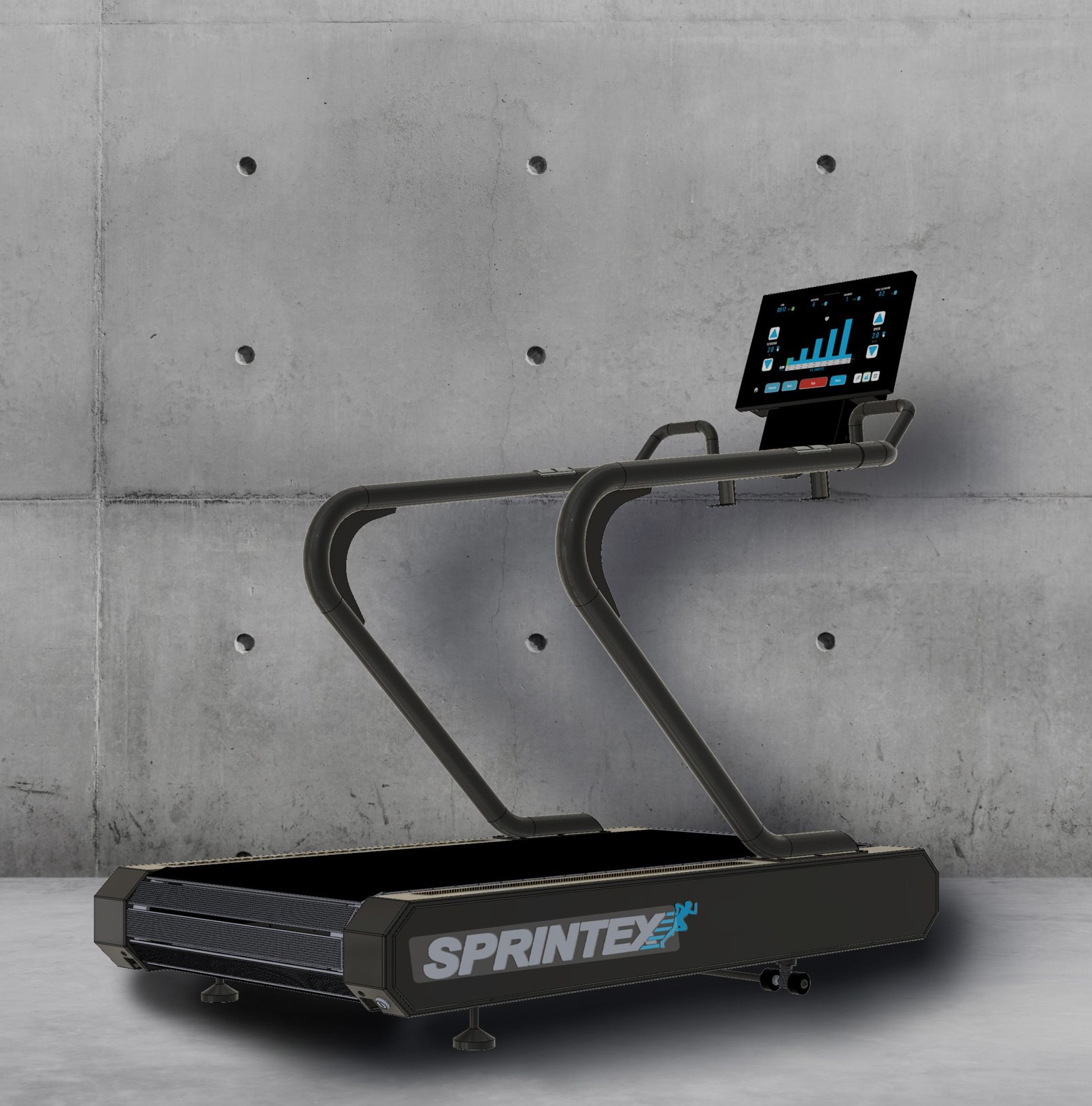There’s a certain choreography to running. The foot meets the earth, the body coils and releases, and—at its best—the motion feels less like exercise and more like rhythm. But for decades, treadmills have disrupted that flow. The belt jerks, the deck slaps, and we adapt our stride not to run freely, but to survive the machine.
The slat-belt treadmill was a step in the right direction. Designed to reduce impact and better mimic the movement of outdoor running, slat-belts marked a turning point in how we thought about treadmills. But while most focused on durability and high-intensity performance, one German manufacturer quietly began refining it for something else entirely.
Sprintex didn’t invent the slat-belt. What they did was reimagine it—for gait analysis labs, recovery clinics, and movement purists. Their machines don’t scream for attention. They whisper to your joints.
Unlike traditional treadmills that rely on a continuous flat belt stretched taut between rollers, Sprintex employs a series of interlocking, rubberized slats that glide across a bed of precision bearings—over a hundred of them per deck. The result isn’t just a smoother stride. It’s a different sensation altogether.
Running on a Sprintex feels like stepping onto a moving forest path. The deck gives slightly underfoot, absorbing force rather than reflecting it. Dynamic friction is nearly nonexistent. The machine doesn’t demand that you adapt to its mechanics—it adapts to you.
It’s the kind of nuanced difference that most people don’t even know they’re missing—until they experience it. And once they do, they don’t want to go back.
Sprintex treadmills have long been used in clinical settings across Europe, particularly in sports science and rehabilitation. With finely-tuned speed controls, even reverse running capabilities, they’re as much diagnostic tools as they are training platforms. Sports therapists use them to retrain gait mechanics post-injury. Coaches use them to optimize stride efficiency. But they’re not reserved for elite athletes. Their true value is in how they make movement feel more natural—for anyone, at any level.
In a world where fitness machines grow increasingly loud—visually, sonically, and digitally—Sprintex moves in the opposite direction. No glitzy leaderboards. No blaring music. Just intelligent mechanics and a deep respect for the body’s own design.
This is a treadmill for those who care less about keeping up and more about tuning in.
At a time when wellness often gets reduced to tech stacks and trend cycles, Sprintex offers something refreshingly analog: a better way to move. It reminds us that innovation doesn’t always come with fanfare. Sometimes, it just feels right.
And maybe that’s the future of running—not harder, faster, louder—but softer. Smarter. Quieter.

